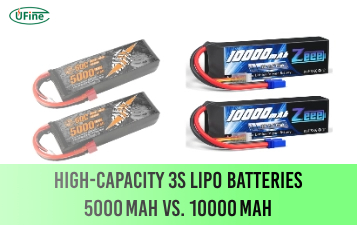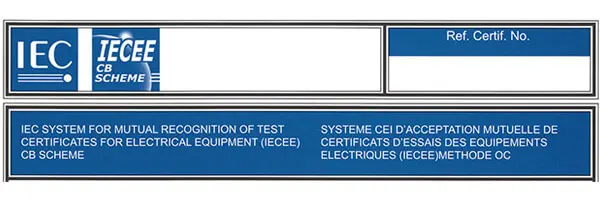What is IEC62133? Understanding this certification is crucial in navigating the realm of product safety standards. This article delves into the significance of IEC62133 certification, its testing procedures, covered products, and commonly asked questions.
Part 1. What is IEC62133?
IEC62133 is a global safety standard for rechargeable lithium-ion batteries in gadgets. It ensures these batteries are safe, reducing risks like fire and explosions. The standard includes tests for mechanical abuse, electrical abuse, and extreme temperatures. Manufacturers need IEC62133 certification to show their products are safe and trustworthy to consumers and regulators worldwide.
Part 2. Why is IEC62133 certification necessary?
IEC62133 certification is essential for various stakeholders, including battery manufacturers, consumers, and regulatory bodies, for the following reasons:
For Battery Manufacturers
- Demonstrates commitment to producing safe and reliable products.
- IEC62133 certification enhances brand reputation and trust among consumers.
- Opens up opportunities for global market access by meeting international standards.
- It helps mitigate potential legal risks associated with product safety issues.
For Consumers
- Assures battery safety and reliability.
- IEC62133 certification reduces the risk of accidents, such as fires, explosions, and chemical leaks.
- Ensures products meet recognized safety standards, enhancing peace of mind during use.
- EC62133 certification promotes consumer confidence in the quality and performance of electronic devices powered by certified batteries.
For Regulatory Bodies
- Supports efforts to protect public safety and health by establishing minimum safety requirements.
- IEC62133 certification facilitates regulatory compliance and enforcement through standardized testing procedures.
- It helps streamline the certification process for manufacturers by providing clear guidelines and benchmarks.
- Contributes to international harmonization of safety standards, promoting consistency in product safety regulations across borders.
Part 3. IEC62133 Technical Specifications
Electrical Performance
- Voltage and capacity: Batteries must meet specified voltage and capacity requirements to provide sufficient power for electronic devices.
- Charge and discharge characteristics: Batteries undergo testing to evaluate their ability to charge and discharge safely and efficiently over their lifespan.
- Cycle life: The number of charge-discharge cycles a battery can undergo while maintaining its performance within acceptable limits is assessed.
Mechanical Integrity
- Physical dimensions: Batteries are measured to ensure they meet dimensional specifications and can fit appropriately into electronic devices.
- Durability: Batteries undergo mechanical stress testing to evaluate their ability to withstand handling, transportation, and installation without damage.
- Terminal integrity: We assess the integrity of battery terminals and connections to ensure secure and reliable electrical contact.
Safety Considerations
- Overcharge and over-discharge protection: Batteries must have built-in protection mechanisms to prevent overcharging or over-discharging, which can lead to safety hazards.
- Thermal stability: We evaluate the battery’s ability to maintain stable operation under various temperature conditions to prevent overheating and thermal runaway.
- Short-circuit protection: Batteries undergo testing to ensure they withstand short-circuit conditions without causing safety hazards such as fire or explosion.
Part 4. IEC62133 Testing Procedures
The IEC62133 certification involves rigorous testing procedures to ensure the safety and reliability of lithium-ion batteries. Here are the critical testing procedures involved:
Mechanical Abuse Testing
- Batteries undergo various mechanical stress tests, including crushing, puncturing, and impact tests.
- These tests assess the battery’s ability to withstand physical damage and prevent hazards such as leakage or explosion.
Electrical Abuse Testing
- Assessors evaluate the integrity of battery terminals and connections to ensure secure and reliable electrical contact.
- The purpose is to evaluate the battery’s response to abnormal electrical conditions and prevent thermal runaway or fire.
Thermal Testing
- We expose batteries to extreme temperature conditions, including high and low temperatures.
- This testing determines the battery’s performance and safety across various environmental conditions.
Environmental Testing
- Batteries undergo environmental stress testing, including humidity, vibration, and altitude tests.
- These tests simulate real-world conditions to assess the battery’s durability and reliability.
Safety Performance Testing
- Evaluators assess batteries for safety features such as built-in protection circuits and thermal shutdown mechanisms.
- The testing ensures the battery can safely handle typical usage scenarios without harming users or devices.
Capacity and Performance Testing
- Batteries undergo capacity testing to measure their energy storage capacity and performance over time.
- This testing verifies that the battery meets specified performance requirements and maintains consistent performance throughout its lifespan.
Part 5. What battery types does IEC62133 cover?
IEC62133 covers a range of battery types, ensuring safety standards for various chemistries commonly used in portable electronic devices. Here are the battery types covered under IEC62133 certification:
Lithium-ion Batteries
- These are the most common rechargeable batteries in electronic devices like smartphones, laptops, and cameras.
- IEC62133 certification ensures that lithium-ion batteries meet safety requirements to prevent hazards such as overheating and explosion.
Nickel-Metal Hydride (NiMH) Batteries
- People often use NiMH batteries in applications such as remote controls, toys, and power tools.
- IEC62133 certification verifies the safety and reliability of NiMH batteries under various operating conditions.
Lead-Acid Batteries
- Lead-acid batteries are commonly featured in automotive applications, uninterruptible power supplies (UPS), and emergency lighting systems.
- IEC62133 certification ensures lead-acid batteries meet safety standards for reliable performance and longevity.
Other Battery Chemistries
- While lithium-ion, NiMH, and lead-acid batteries are the most prevalent, IEC62133 certification can also apply to other battery chemistries used in niche applications.
- This includes technologies like lithium polymer (LiPo) batteries used in drones, radio-controlled vehicles, and alkaline batteries used in consumer electronics.
Part 6. FAQs
-
Is IEC 62133 mandatory?
IEC 62133 is not mandatory but is a widely recognized safety standard for lithium-ion batteries. -
What is the difference between IEC 62133 and UN38.3?
IEC 62133 focuses on safety requirements for portable secondary lithium cells and batteries. At the same time, UN38.3 covers testing procedures for lithium cells and batteries. -
What certificate is required for lithium-ion batteries?
Depending on the application and jurisdiction, various certifications may be required, but commonly recognized certifications include UN38.3, IEC 62133, and UL 1642. -
What is the IEC standard for batteries?
The International Electrotechnical Commission (IEC) has several battery-related standards, with IEC 62133 being one of the most prominent for lithium-ion batteries. -
What are the most common IEC standards?
Some common IEC standards related to batteries include IEC 62133 for lithium-ion batteries, IEC 60086 for primary batteries, and IEC 61960 for secondary lithium batteries.
Related Tags:
More Articles

High‑Capacity 3S LiPo Batteries: 5000 mAh vs. 10000 mAh
Compare 3S LiPo 5000mAh vs 10000mAh batteries by weight, power, and use. Find the best fit for your drone, RC car, or boat setup.
Top 5 Applications for Small 3S LiPo Batteries
Small 3S LiPo batteries power drones, RC gear, wearables, and robotics with high energy and low weight. Making them ideal for compact electronics projects.
Building and Charging Your Own 3S LiPo Pack: A Step‑by‑Step Guide
Learn how to build, balance, and charge a 3S LiPo battery pack safely at home with this complete DIY guide for hobbyists and beginners.
How to Choose the Right LiPo Battery Plug Type?
Discover the best LiPo battery plug types, how to choose them, and expert tips for safe usage, soldering, and maintenance.
Choosing the Right Connector for Your 3S LiPo Battery
Choosing the right 3S LiPo connector depends on current, space, and use. Learn the pros and cons of XT60, JST, EC3, and more.




